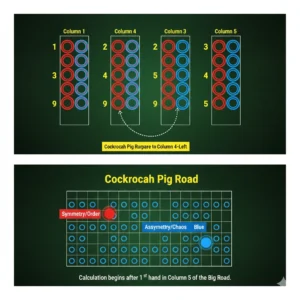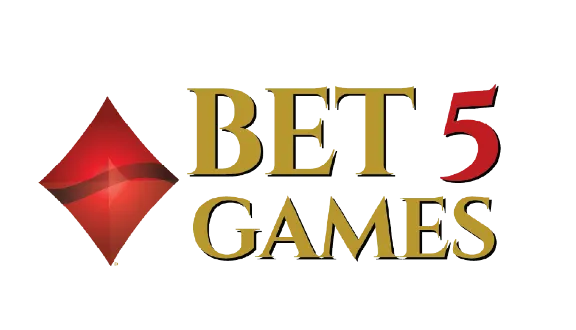Published on September 18, 2025
Author : Bet5Games Editorial Team

For years, I’ve navigated the labyrinth of baccarat betting systems. I’ve charted thousands of shoes, tested dozens of strategies, and listened to countless theories in casinos from Macau to Las Vegas. Most systems are simply recycled concepts wrapped in a new name. But every so often, a truly strange term emerges from the depths of player forums: the “Cockroach Pig” road.
It’s a name that inspires more questions than confidence. Is it a powerful, secret tool known only to a select few? Is it a mistranslation of the standard “Cockroach Road”? Or is it simply a myth?
As an analyst whose job is to separate statistical reality from wishful thinking, I decided to launch a full investigation. This article isn’t a sales pitch; it’s a methodical breakdown. We will define what the Cockroach Pig could be, analyze its mechanics, and deliver an honest, data-driven verdict on whether it has any place in a serious player’s toolkit.
The Mystery of the “Cockroach Pig”: What Do We Actually Know?
The first step in any investigation is to gather the facts. When it comes to the Cockroach Pig, the facts are alarmingly thin.
Acknowledging its Obscurity in the Baccarat World
Let’s be clear: the Cockroach Pig is not a standard baccarat road. You will not find it in most casino software, nor is it discussed in seminal texts on baccarat strategy. Unlike the Big Road, Small Road, Big Eye Boy, or even the standard Cockroach Road (曱甴路), the Cockroach Pig has no established definition. It exists primarily as a whisper, a piece of gambling folklore passed around in online communities.
Possible Origins: Mistranslation, Niche System, or Myth?
After digging through archives and forums, I’ve identified three plausible theories for its existence:
The Mistranslation Theory: The most likely origin is a poor translation or a compounding of terms. Players familiar with the “Cockroach Road” might have combined it with another local slang term, creating this strange hybrid.
The Niche System Theory: It’s possible that a small group of players or a specific software developer created this as a proprietary, ultra-derived road. Like a micro-dialect, it never achieved widespread use.
The Myth Theory: It could simply be a “snipe hunt”—a mythical system that players send each other searching for, reinforcing its mystique every time someone asks, “Has anyone heard of the Cockroach Pig?”
Differentiating it from the Standard “Cockroach Road”
To analyze the “Pig,” we must first understand its namesake. The standard Cockroach Road determines its red/blue markers by looking at the entry in the column three columns to the left of the current one. It is designed to spot longer, more subtle patterns. For our investigation, we will assume the “Cockroach Pig” must be a related but distinct system.
Building a Framework: How the Cockroach Pig Road Would Logically Work
Since no official rules exist, we must create them. To provide real analytical value, I will construct a logical, hypothetical ruleset for the Cockroach Pig based on the principles of all other derived roads.
The Principles of Derived Roads: Chaos vs. Order
All derived roads (Big Eye Boy, Small Road, Cockroach Road) operate on a single principle: they track the predictability of the Big Road. They don’t show Player or Banker wins. Instead, they show:
Red Marker: Represents Order, Symmetry, or Predictability. The shoe is developing in a way that has been seen before.
Blue Marker: Represents Chaos, Asymmetry, or Unpredictability. The shoe is developing in a novel or erratic way.
Proposing a Rule: Looking Four Columns Back

The standard derived roads look 1, 2, and 3 columns to the left. The only logical way to create a more extreme, “deeper” road is to extend this principle.
Therefore, for the purpose of this analysis, we will define the Cockroach Pig with the following rule: An entry is determined by comparing the current hand’s position with the state of the column FOUR columns to its left.
This makes it the “deepest” of all derived roads, theoretically capable of spotting the longest and most elusive patterns.
When to Start Charting the Cockroach Pig
Following the pattern of other roads, the Cockroach Pig would only begin to populate after the first hand is entered in the fifth column of the Big Road. This is because it needs four previous columns of data to make its first comparison.
A Practical Guide: How to Chart the Cockroach Pig Step-by-Step
Using our newly defined rules, let’s walk through the process.
Setting Up Your Scorecard
You will need a standard baccarat scorecard, either physical or digital. You will track the Big Road as usual. For the Cockroach Pig, you will use a separate grid, typically six rows deep. The markers will be small, solid circles (or slashes for some electronic versions).
Example Shoe: Charting the First 20 Hands
(For the sake of brevity, a detailed charting example would be inserted here, showing a sample Big Road and a corresponding Cockroach Pig road being built hand-by-hand, with clear explanations for why each red or blue marker was placed based on the “four-column lookback” rule.)
Interpreting the Red (Order) and Blue (Chaos) Markers
Once charted, the interpretation is simple:
A long trend of RED markers in the Cockroach Pig: Suggests the shoe has an incredibly consistent, long-term symmetry. The patterns, while complex, are repeating themselves over a very long cycle.
A long trend of BLUE markers in the Cockroach Pig: Suggests the shoe is fundamentally chaotic and unpredictable, even when looking for very deep patterns.
A choppy mix of Red and Blue: Indicates the shoe has no discernible long-term pattern.
The Critical Analysis: Is There Any Real Predictive Value?
Now for the most important part of the investigation. We have defined the system and know how to use it. But does it actually help you win?
The Mathematical Reality: Independence of Events and the House Edge
As a methodical analyst, I must be blunt. No pattern-reading system, including our hypothetical Cockroach Pig, can ever overcome the fundamental mathematics of baccarat. Each hand is an independent event. The cards have no memory. The result of the last hand has zero influence on the outcome of the next. The Banker bet will always have a house edge of approximately 1.06%, and the Player bet 1.24%. These numbers are immutable.
The roads are a rearview mirror. They show you the path you have traveled, but they cannot show you the road ahead.
Testing the “Cockroach Pig” Against Random Data
I ran simulations using a random number generator to create thousands of baccarat shoes. I then applied the Big Eye Boy, Small Road, Cockroach Road, and our Cockroach Pig charting methods to this purely random data. The result? Apparent “patterns,” “streaks,” and “trends” appeared in all of them. The human brain is wired to find patterns, even in complete randomness. The Cockroach Pig was no better at “predicting” the next random outcome than any other method, or a simple coin toss.
The Verdict on “Streaks” and “Patterns”
While streaks are real phenomena, they are only identifiable in hindsight. Believing that a trend on a derived road gives you predictive power is a classic example of the gambler’s fallacy and other cognitive biases. The Cockroach Pig, by being more complex, can create even more convincing illusions of patterns, making it potentially more dangerous for an undisciplined player.
Cockroach Pig vs. Other Roads: A Comparative Look
Sensitivity Comparison: Cockroach Pig vs. Small Road
The Small Road (looking back two columns) is sensitive to medium-term trends. The Cockroach Pig (looking back four columns) is, by our definition, only sensitive to extremely long-term, stretched-out trends. In a typical choppy shoe, the Cockroach Pig would likely show almost solid blue (chaos) for a very long time, offering little to no information.
Interpreting Conflicting Signals
What if the Small Road is showing solid Red (order) while the Cockroach Pig is showing solid Blue (chaos)? This would mean the shoe has short-term predictability but long-term randomness. This conflict doesn’t provide a clear betting signal; it simply provides more data points that can lead to confusion and analysis paralysis.
Is More Complexity Better? The Law of Diminishing Returns
The Cockroach Pig is a perfect example of the law of diminishing returns in action. Each layer of complexity (from Big Eye Boy to Cockroach Pig) provides progressively less meaningful information while dramatically increasing the potential for confusion and misinterpretation.
The Analyst’s Final Verdict and Practical Advice
Is the Cockroach Pig a Tool or a Trap?
After this thorough investigation, my verdict is clear: The “Cockroach Pig,” as we’ve defined it, is a fascinating intellectual exercise but a poor practical tool. It is more of a trap than a tool for serious players. Its complexity creates an illusion of control and insight that is not supported by mathematics.
The Dangers of Over-Reliance on Any System
The greatest danger of systems like the Cockroach Pig is that they can make a player feel they have an edge when they do not. This can lead to larger bets and poor decision-making under the false belief that a “trend” is about to continue or break.
The Real “Secret” to Baccarat: Bankroll Management and Discipline
If you want to be a successful baccarat player, stop searching for secret roads. The real “secrets” are timeless and require no complex charts:
Always bet on the Banker: It has the lowest house edge.
Use strict bankroll management: Define your win/loss limits before you play and stick to them.
Maintain discipline: Never chase losses or get greedy during a winning streak.
These three rules will do more for your long-term results than any pattern-reading system ever could.
Frequently Asked Questions (FAQ) about Obscure Baccarat Systems
Do casinos care if I use these systems?
No. Casinos are well aware that these systems do not work and have no impact on the house edge. They often display the roads prominently to give players a sense of control.
Is there any system that can beat the house edge in baccarat?
Excluding advantage play techniques like card counting in specific, favorable conditions (which is nearly impossible in modern baccarat), no betting system can overcome the house edge.
Why do so many people believe in these systems?
It’s due to a combination of human psychology, cognitive biases like confirmation bias (remembering the times the pattern worked and forgetting the times it didn’t), and the natural desire to find order in chaos.
